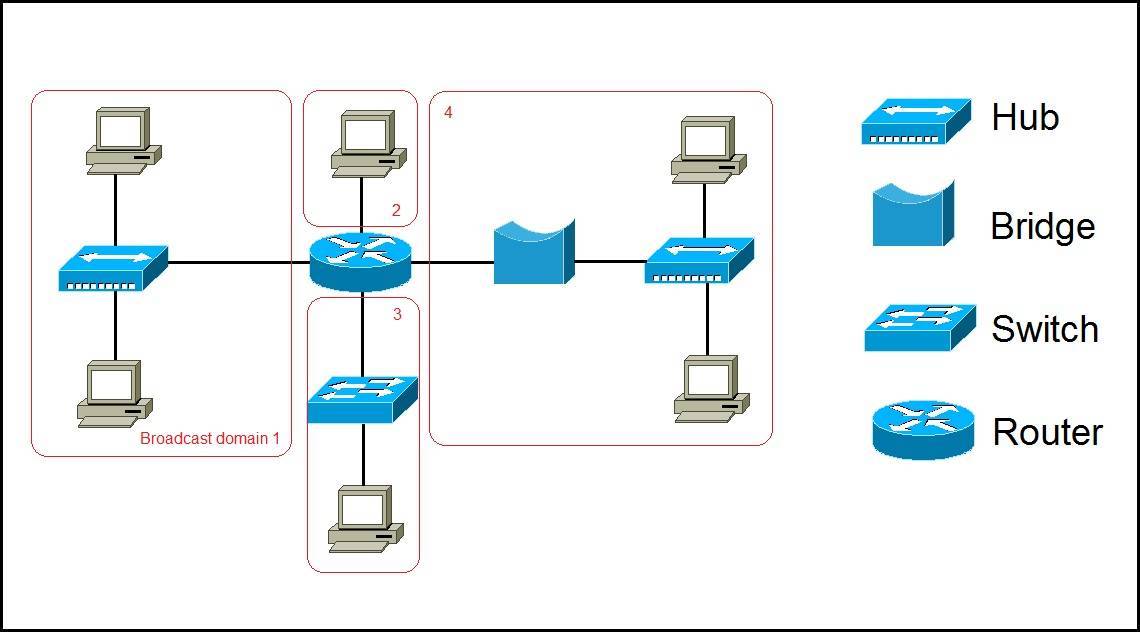Broadcast Domains, Adala Broadcast Domains, Broadcast Domains and Coalition Domains, Broadcast Domains and Conflict Domains Download and Rotate, Broadcast Domain Comments, Broadcast Domains, Domains, Domains, Domains and Domains, Domains and Domains
Domain conflicts
The “Conflict Domain” describes the network, when two device packets collide when sending simultaneous packets to a shared network. Reduction to conflict is required by eliminating conflict packets and reducing network speed and efficiency.
Conflicts usually occur in a centralized environment because all the ports in the center are in the same conflict zone. Therefore, all devices connected to the hub can work on the same conflicting domain and on the same device, and other devices must listen to the network to avoid conflicts. All network space is shared across all devices.
Unlike gel, each port on a bridge, switch, or router has a different collision domain, which reduces conflict and allows devices to be connected twice. Full binary communication doubles the speed of data storage. To understand the areas of conflict, see the following figure:
As can be seen from the review, there are eight conflict domains. Because the hub is a collection domain or all the ports in the hub are in the same collection domain, each port on the router, bridge, and transmitter is a separate conflict domain.
Broadcast domain
All devices in the broadcast domain can access the data link layer by transmitting. Broadcast packets are available on any Broadcast domain network from any device. All hubs and transmission ports share the same transmission domain, but all router ports
All hubs and transmission ports are in the same transmission domain. Keyboards and keys are provided for all interfaces except the recognized interface. The router does not send the transmission because it does not send it to another interface.
Each interface of the router looks at different transmission domains and each transmission is subdivided into a specific domain. Router transmission exceeds domain limits. Now look at the same statistics for presentation domains.
In the image above you can see the names of the four domains. This is because all the ports on the hub, bridge, and switch are on the same transmission domain and all the router interfaces are on the same transmission domain.
2-layer devices send a program called ARP to a well-known IPv4 address on the local network to find the appropriate MAC address. The IP address can be retrieved from the DHCP server using the Dynamic Host Configuration Protocol (DHCP). Many hosts can connect to a large exchange domain. One problem with large broadcast domains is that they are overloaded and have a negative impact on the network.
Multi-bandwidth reduces network bandwidth for normal traffic because it is transmitted to all devices in the transmission domain. This also reduces the processing power of computers and network devices. This is because the central processing unit used for packet processing is needed to process all packet computers and network devices.
So we need to reduce the transmission.
The router must be connected to the network to reduce transmission. The router is not well installed, so the router cannot be integrated into multiple networks. Another way to reduce this is through a network.
Circumcision is a procedure that reduces network density, improves network performance, and simplifies management. With the help of the network, we can easily remove parts of the network. We can also enforce security policies, such as the sub-networks we communicate with. There are different ways to use a subnet. Network administrators can configure subnet services:
Different floors in one building.
Different organizations.
Another part of the organization
Various devices, such as servers, printers, and hosts
Another important distribution for the network.











Leave a Reply